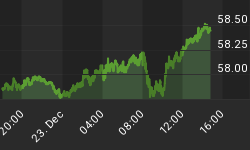This is my story. I have no song. Just alone and broken hearted since I fell in love with you.
Those words are the refrain of a long ago popular rhythm and blues hit by Gene and Eunice that many technology investors today can still appreciate since the growth stock bubble burst in early 2000.
Basically started in 1997, that love affair for investors ran wide and deep. Back then value stocks were about as unwelcome as a bad case of poison oak on one's honeymoon.
Back then nobody wanted to own utility stocks. Since then utility stocks have out performed their younger, less-stodgy growth stock brethren on a total return basis. Back then utility and energy stocks were considered aging industrial quagmires, a place for widows and orphans and doddering old grumps.
A couple of those old grumps, it turned out, happened to be Warren Buffet and his longtime partner Charley Munger. Since then energy shares have resembled that once famous Mobil Oil symbol, Pegasus, in flight, soaring up the stock charts, raking in the profits. And it isn't just in the U.S. that utility shares over the period have been hot. Take a look at Europe where merger fever is sweeping through the sector.
Late last year (December 31, 2005) we wrote a piece for this site entitled "Three Halves," suggesting the U.S. equity markets would remain in 2005 range bound. Since then to date the Dow is down more than three percent and the S&P 500 remains about as flat as my first girlfriend's chest in adolescence. No apologies for political incorrectness. And the NASDAQ, despite a few feeble onslaughts of the 2200 level, is trading essentially where it started the year. Meanwhile, European equities in the main have outperformed their U.S. counterparts and the Japanese equity Rip Van Winkle appears to be, if money flow studies prove anything, lurching from its long slumber.
Yes, you've heard that before. But you've also heard the pundits with their punditry. Omit the preachments of Sir Alan from this group at your own investing peril. One can only wonder what the financial markets will do when Sir Alan doesn't have the stock and housing markets to kick around anymore. So where is Dick Nixon when we need him. You have also heard about the interest rate "conundrum," as Sir Alan once referred to it, the Fed's inability to cool off the economy and prevent a housing bubble from bursting.
You have also heard much about low risk premiums, global imbalances and subdued volatility in many emerging markets. To hear many of these folks, there "ain't no" more liquidity traps. Historical interest rate spreads between the so-called desirable and undesirables gravitate near record lows. Hedge funds in recent years have flocked to many of these markets, looking for traction and quick profits. Much of this palaver could turn out to be a kind of Maginot Line thinking.
With the U.S. facing a current-account deficit - the amount of foreign capital needed to pay for investment and consumption - headed north of $700 billion this year and growing signs of stagflation, a war to support, and a large, hurricane-battered area to rebuild, this may be a market stuck in a sideways funk. At least three Federal Reserve officials within the past fortnight have expressed their inflation concerns. Productivity gains appear to have topped out and with unemployment at 4.9 percent about all that remains to come is higher labor costs.
So if there is a for some unforeseen reason a sudden outburst of volatility, either down or to the upside, don't be surprised to see more investors with broken hearts.















